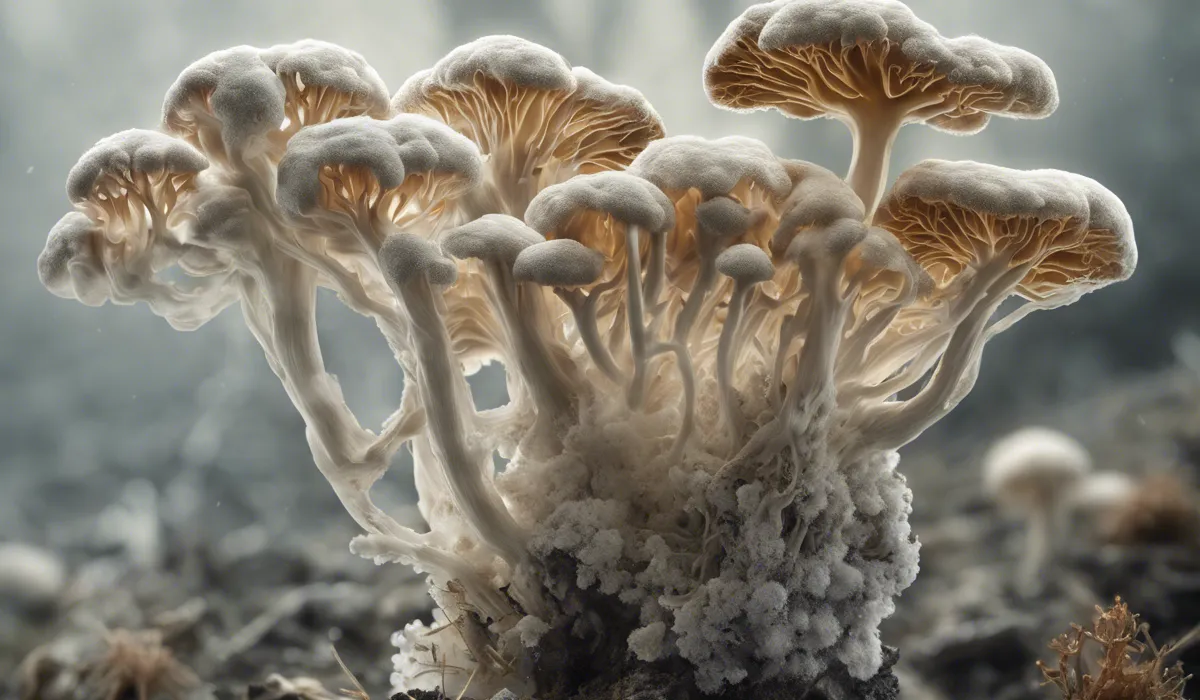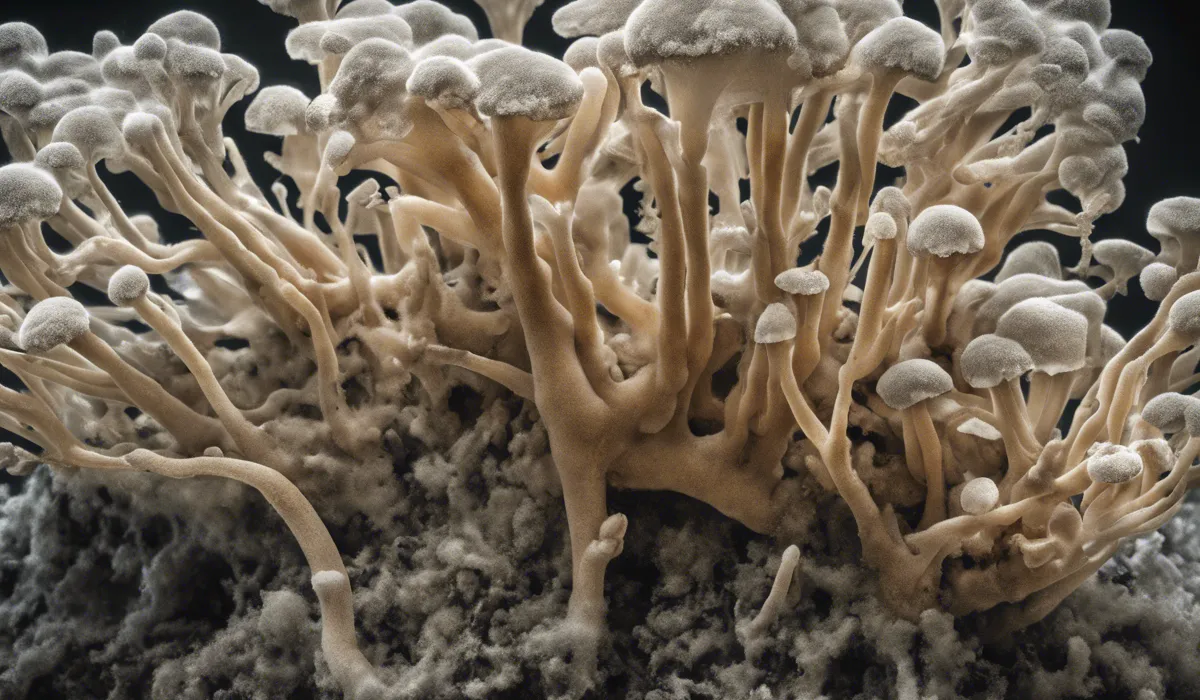Yes, mold has mycelium. Mycelium is the vegetative part of a fungus, consisting of a network of fine white filaments (hyphae). Molds are a type of fungus, and their mycelium is responsible for nutrient absorption and growth.
Understanding Mold and Mycelium

Definition of Mold
Mold is a type of fungus that grows in the form of multicellular filaments called hyphae. Unlike plants that rely on photosynthesis, molds obtain energy through the decomposition of organic matter.
These fungi are commonly found in damp, warm, and humid environments, and they play a crucial role in the natural recycling process of dead materials.
The Role of Mycelium in Fungi
Mycelium is the vegetative part of a fungus. It consists of a network of hyphae that infiltrate the growth substrate, providing the necessary support for the fungus to absorb nutrients and water.
This dense network is the foundation for the growth and survival of most fungi, including molds.
Relationship Between Mold and Mycelium
The relationship between mold and mycelium is intrinsically connected. Mycelium is the part of the mold that remains unseen and buried within the growth medium.
It is the driving force behind mold’s expansion and proliferation. When conditions are right, the mycelium can produce spore-bearing structures that are often visible to the naked eye as mold colonies.
Types of Fungi
Fungi can be classified into several types, with molds, yeasts, and mushrooms being the most common.
Molds are characterized by their filamentous growth and asexual reproduction. Yeasts are unicellular fungi that often reproduce by budding.
Mushrooms, on the other hand, are the fruiting bodies of certain fungi and are largely used for spore dissemination.
Each type has a unique role in the ecosystem and varies in its relationship with mycelium.
Characteristics of Mold’s Mycelium

Structure of Mold’s Mycelium
The structure of mold’s mycelium is complex and efficient. It is composed of branching hyphae that extend into a feeding substrate.
This intricate design allows for a large surface area relative to its volume, making it highly effective at absorbing nutrients and water, and thus supporting mold’s vigorous growth.
How Mycelium Supports Mold Growth?
Mycelium is fundamental to mold growth. It secretes enzymes that break down complex organic compounds in the substrate, which the mold can then absorb and use as nutrients.
This process not only sustains the mold but also prepares the environment for further colonization.
Differences in Mycelium Among Various Mold Species
While all molds have mycelium, the structure and behavior can vary among species.
Some molds may have denser mycelial networks, while others may produce more specialized hyphae for different environmental conditions or substrates.
These differences allow molds to adapt to a wide range of habitats and resources.
Lifecycle of Mold and the Role of Mycelium in Reproduction
The lifecycle of mold is a continuous process involving mycelium at each stage. Mycelium facilitates asexual reproduction through spore production.
These spores, once released, can germinate and form new mycelia, starting the cycle anew.
The efficiency of this reproductive strategy contributes to the ubiquity of molds in diverse environments.
Significance of Mycelium in Mold Ecology

Mycelium’s Role in Nutrient Absorption and Decomposition
Mycelium plays a pivotal role in nutrient absorption and decomposition. By breaking down organic matter, mycelium releases nutrients back into the ecosystem, making them available for other organisms.
This process is essential for soil health and the continuation of various biogeochemical cycles.
Ecological Importance of Mold and Its Mycelium
The ecological importance of mold and its mycelium cannot be overstated. Molds contribute to the decomposition of dead organic matter, recycling nutrients, and helping maintain the balance of ecosystems.
Without molds and their mycelium, the buildup of organic waste would disrupt the natural cycles of life.
Mycelium’s Impact on Human Environments and Health
Mycelium can have both positive and negative impacts on human environments and health.
While some molds are harmless or even beneficial, others can pose health risks, particularly when they grow unchecked in indoor environments.
Understanding the conditions that promote mold growth is essential for maintaining healthy living spaces.
Mycelium in Bioremediation and Sustainable Practices
Recent advances have shown that mycelium can be used in bioremediation, a process that utilizes living organisms to clean up contaminated environments.
The ability of mycelium to break down pollutants and absorb heavy metals makes it a valuable tool in sustainable practices.
These applications highlight the potential for harnessing mycelium in ways that benefit both the environment and society.
FAQs About Mold and Mycelium
Does mold have a mycelium structure?
Yes, mold has a mycelium structure, which is the vegetative part of the fungus consisting of a network of hyphae.
What is the function of mycelium in mold?
The mycelium in mold is responsible for nutrient absorption and growth of the fungus.
Are all molds a type of fungus?
Yes, all molds are a type of fungus.
What are hyphae in the context of mold?
Hyphae are the fine, thread-like filaments that make up the mycelium of a mold.
Can you see mold mycelium with the naked eye?
While individual hyphae are microscopic, the mycelium network of mold can often be seen with the naked eye as a fuzzy or cottony mass.
Final Thoughts
Molds are a form of fungus characterized by their mycelium, which is an underlying network of hyphae.
This mycelium is critical for the life cycle of mold, as it allows for efficient nutrient absorption and supports the growth and proliferation of the mold colony.
